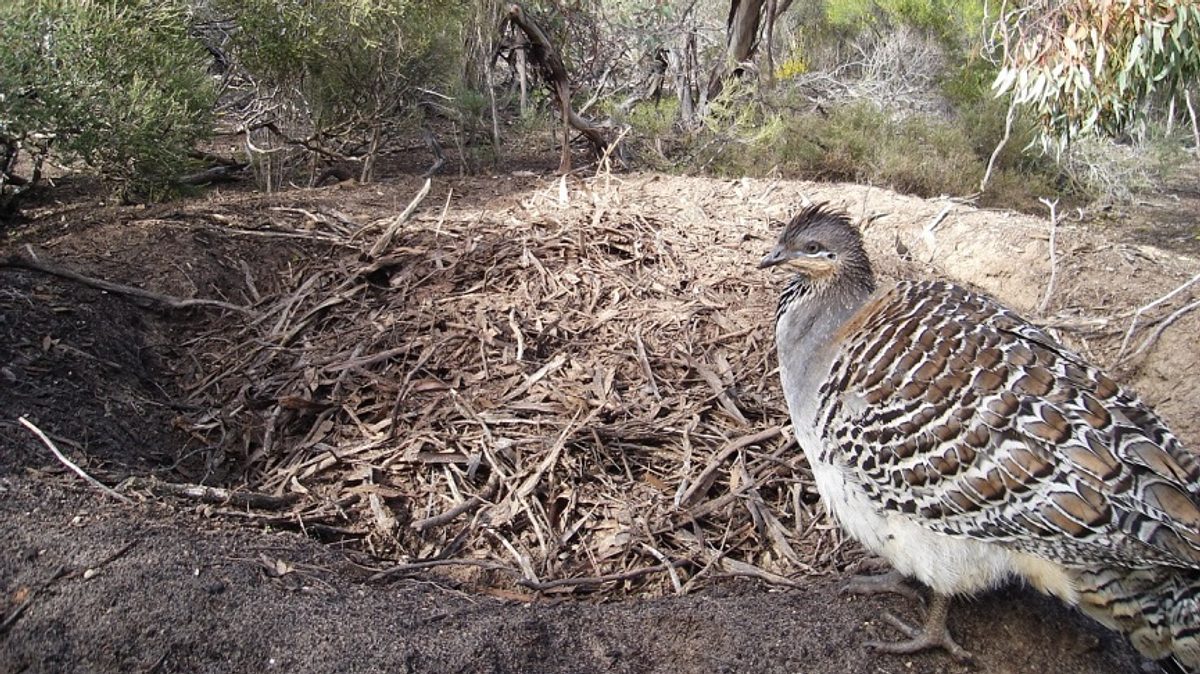Malleefowl active after 10 years
We've recorded Malleefowl breeding activity at Munyaroo Conservation Park for the first time in 10 years.

Annual monitoring of the Nationally Threatened Malleefowl was carried out at Munyaroo last week with Eastern District Landscape Officers visiting 34 known mounds to check for signs of breeding activity. Five active nests were found and signs of Malleefowl (tracks, feathers and scat) were also found at another four locations in the area.
This is very exciting as we haven’t recorded any nesting activity at Munyaroo since 2013 when only one active mound was recorded – and before that in 2012 there were five, and three in 2011.

Annual monitoring of the Nationally Threatened Malleefowl was carried out at Munyaroo last week with Eastern District Landscape Officers visiting 34 known mounds to check for signs of breeding activity. Five active nests were found and signs of Malleefowl (tracks, feathers and scat) were also found at another four locations in the area. This is very exciting as we haven’t recorded any nesting activity at Munyaroo since 2013 when only one active mound was recorded – and before that in 2012 there were five, and three in 2011.
The comeback of Malleefowl in the area could be attributed to higher than average winter rainfall in the past few years combined with the efforts of local ecologists at Secret Rocks working with Middleback Alliance to boost Malleefowl numbers in the area by controlling feral goats, foxes and cats.
Malleefowl chicks typically begin hatching and emerging from mounds in November. Chicks receive no parental care after hatching but can run and feed themselves almost immediately and fly within 24 hours.
Mortality of chicks is very high over the first few weeks after hatching when they are most vulnerable to predation by feral foxes and cats. Only one out of hundred Malleefowl chicks will survive to reach adulthood and breed.
Another threat to Malleefowl this time of year is car strike. During the harvest months, spilled grain attracts Malleefowl to roadsides where they are easily hit by cars. We urge motorist to slow down if they see Malleefowl on the road to give the birds a chance to breed this season.


